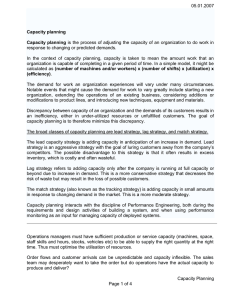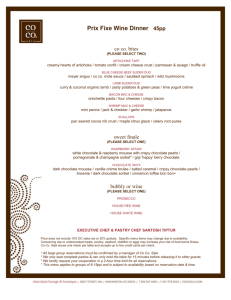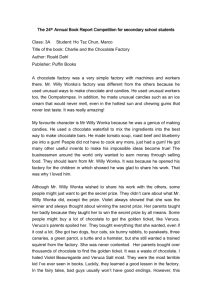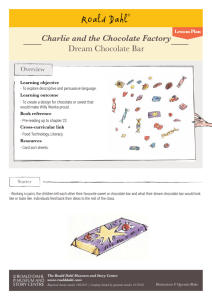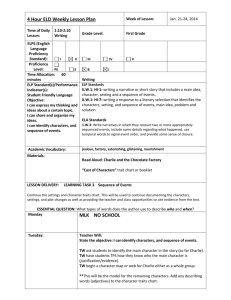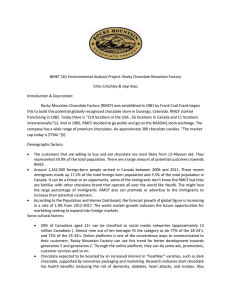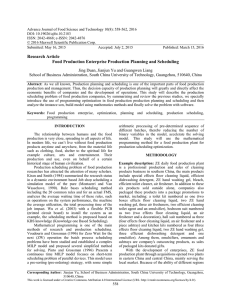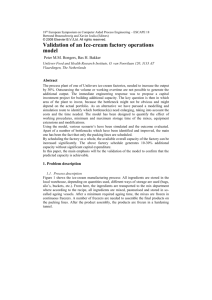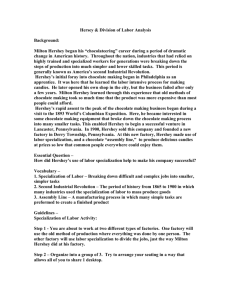WORD
advertisement
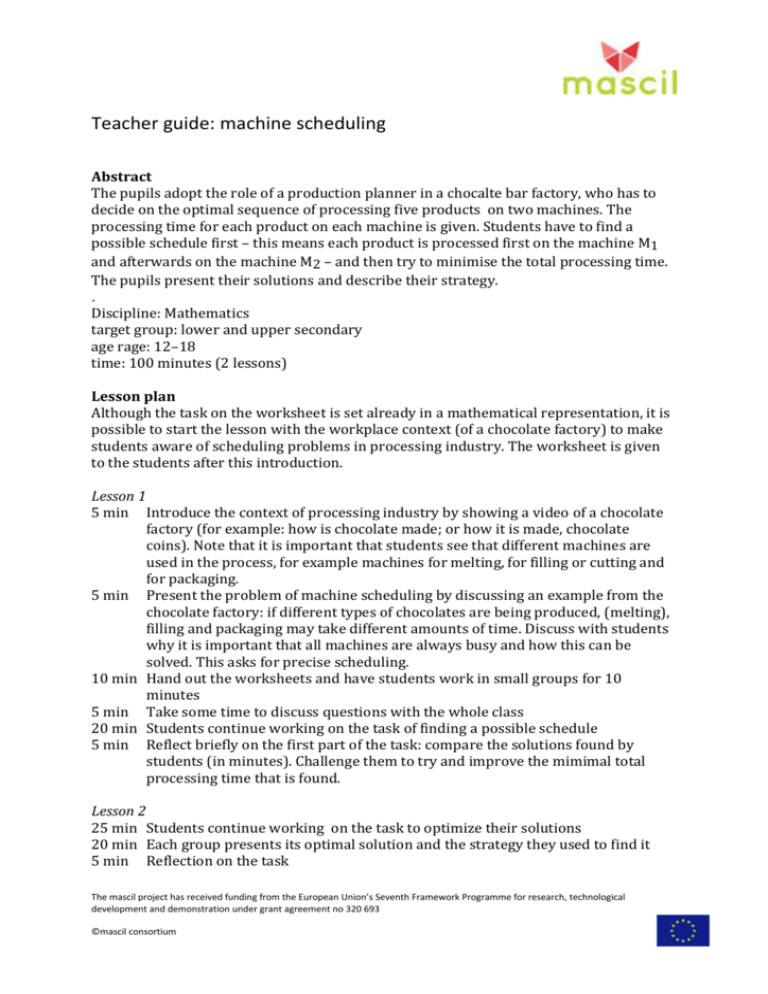
Teacher guide: machine scheduling Abstract The pupils adopt the role of a production planner in a chocalte bar factory, who has to decide on the optimal sequence of processing five products on two machines. The processing time for each product on each machine is given. Students have to find a possible schedule first – this means each product is processed first on the machine M1 and afterwards on the machine M2 – and then try to minimise the total processing time. The pupils present their solutions and describe their strategy. . Discipline: Mathematics target group: lower and upper secondary age rage: 12–18 time: 100 minutes (2 lessons) Lesson plan Although the task on the worksheet is set already in a mathematical representation, it is possible to start the lesson with the workplace context (of a chocolate factory) to make students aware of scheduling problems in processing industry. The worksheet is given to the students after this introduction. Lesson 1 5 min Introduce the context of processing industry by showing a video of a chocolate factory (for example: how is chocolate made; or how it is made, chocolate coins). Note that it is important that students see that different machines are used in the process, for example machines for melting, for filling or cutting and for packaging. 5 min Present the problem of machine scheduling by discussing an example from the chocolate factory: if different types of chocolates are being produced, (melting), filling and packaging may take different amounts of time. Discuss with students why it is important that all machines are always busy and how this can be solved. This asks for precise scheduling. 10 min Hand out the worksheets and have students work in small groups for 10 minutes 5 min Take some time to discuss questions with the whole class 20 min Students continue working on the task of finding a possible schedule 5 min Reflect briefly on the first part of the task: compare the solutions found by students (in minutes). Challenge them to try and improve the mimimal total processing time that is found. Lesson 2 25 min Students continue working on the task to optimize their solutions 20 min Each group presents its optimal solution and the strategy they used to find it 5 min Reflection on the task The mascil project has received funding from the European Union’s Seventh Framework Programme for research, technological development and demonstration under grant agreement no 320 693 ©mascil consortium Remarks - You may want to stimulate students to reflect on their strategie for finding a solution. Some students may use trial and error. Ask them to reflect on this and change their strategy to at least ‘trial and improve’. - One possible strategy is to start with less products, and make an upper and lower estimate for the processing time. Add one product at a time. This is similar to Johnson’s algorithm for job shop scheduling. Experience The students were suprised by the existence of multiple solutions (they had to find a possible solution and afterwards optimize the solution with respect to the processing time). The students worked in goups of four members. the students were ambitious to beat the other groups; it was quite competitve. The mascil project has received funding from the European Union’s Seventh Framework Programme for research, technological development and demonstration under grant agreement no 320 693 ©mascil consortium



